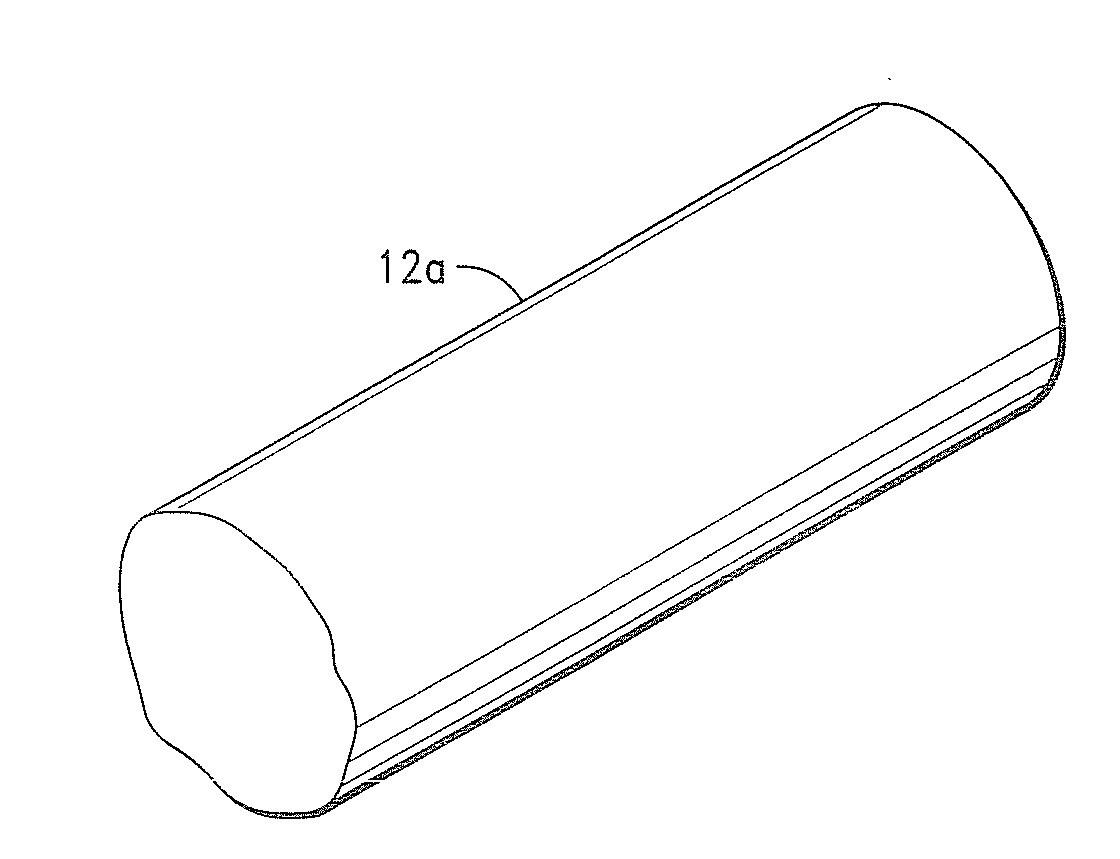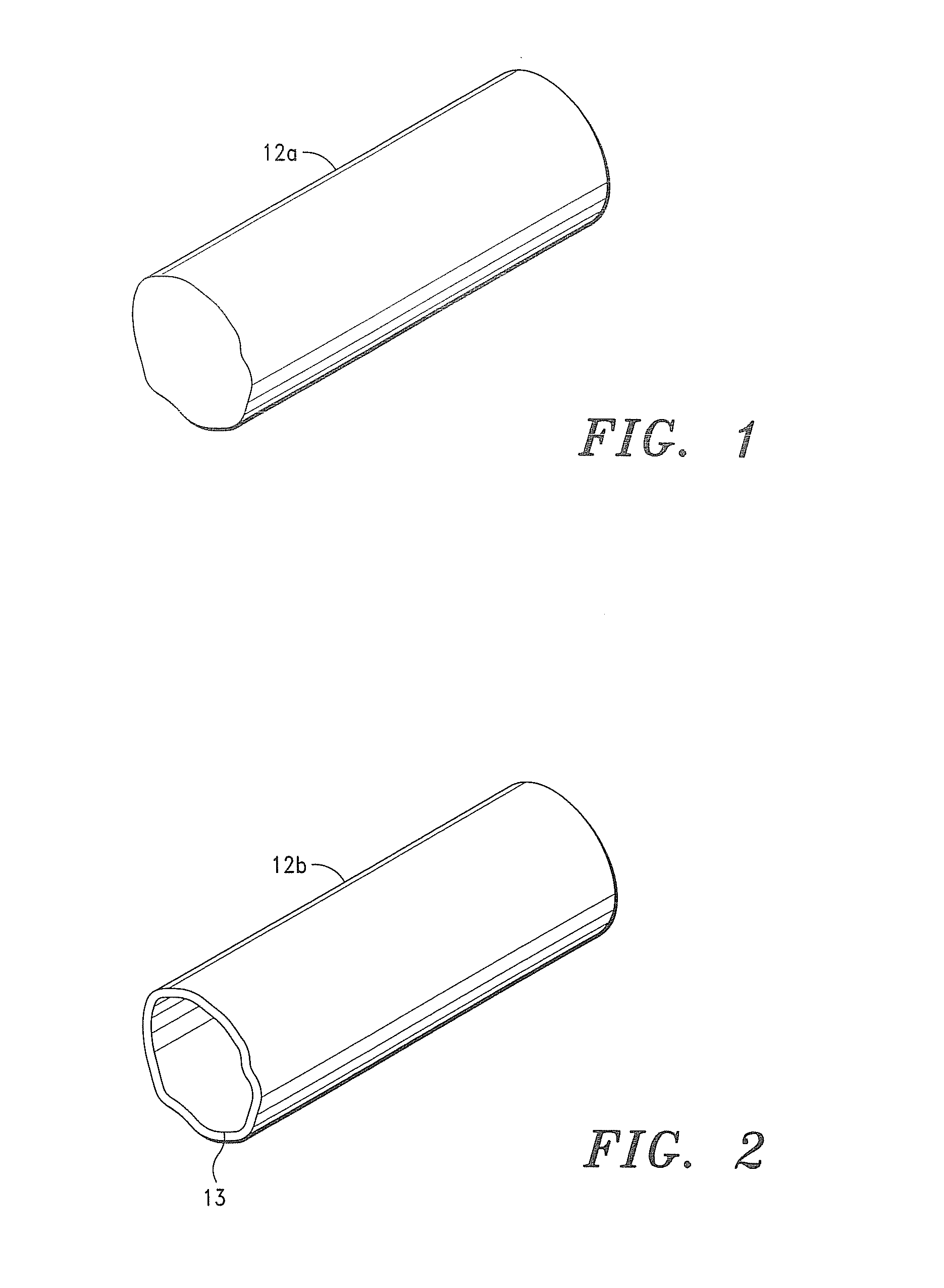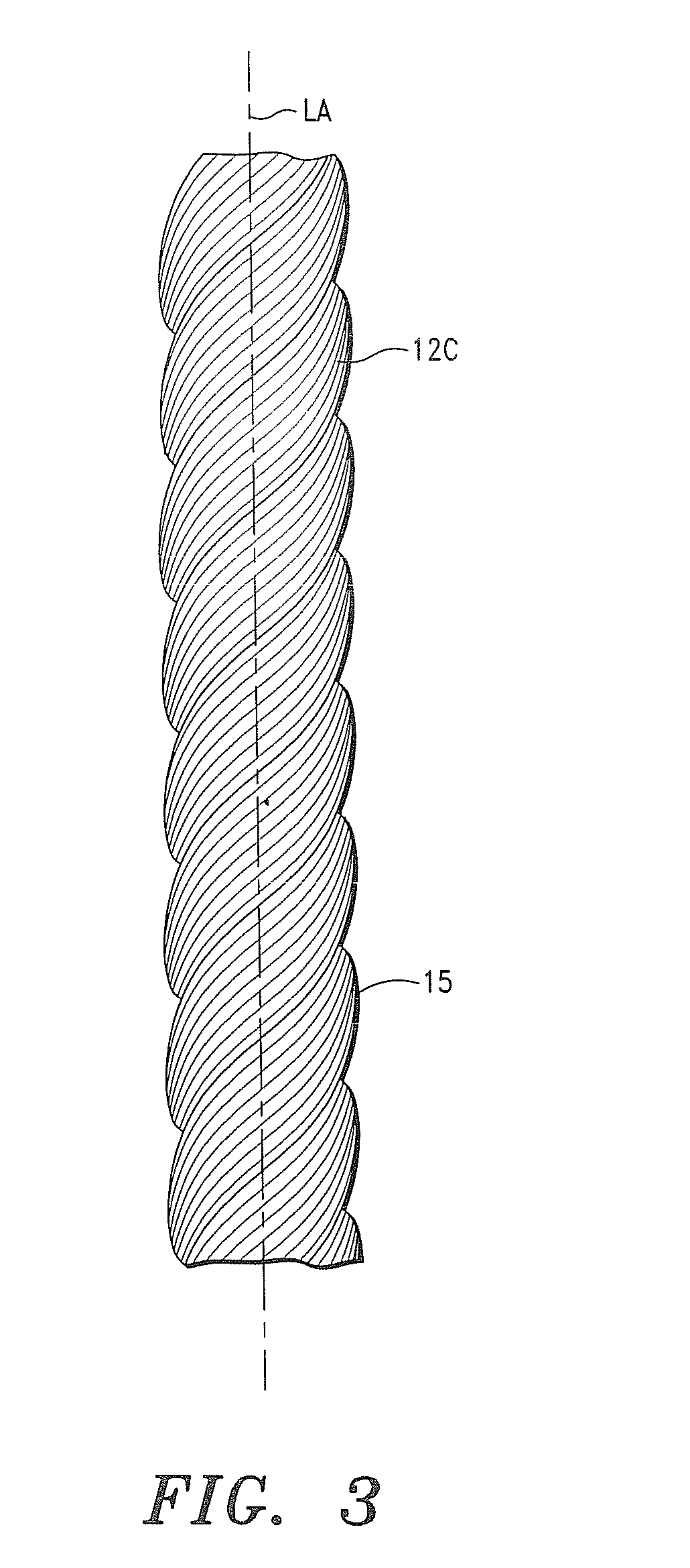Mesh Fiber Members and Methods for Forming and Using Same for Treating Damaged Biological Tissue
a technology of biological tissue and mesh fibers, which is applied in the direction of prosthesis, biocide, surgery, etc., can solve the problems of lack of malleability, non-resorbable synthetic mesh, and frequent and serious problems in health car
- Summary
- Abstract
- Description
- Claims
- Application Information
AI Technical Summary
Benefits of technology
Problems solved by technology
Method used
Image
Examples
example 1
[0270]An ECM patch (i.e. matrix) comprising small intestine submucosa (SIS) and 1 mg / ml of a statin, i.e. cerivastatin, was surgically applied to the myocardium of two canines. The ECM patches remained attached to the myocardium of the canines until they were sacrificed at 2 and 24 hours, respectively.
[0271]Cardiac tissue samples were collected immediately after the canines were sacrificed. The cardiac tissue samples were then subjected to mRNA extraction and quantification via established protocols.
[0272]The measured mRNA levels from the cardiac tissue samples, which are shown in FIGS. 8-10, reflect substantially reduced MCP-1 and CCR2 expression at a 24 hour time point compared to the MCP-1 and CCR2 expression at a 2 hour time point. The mRNA levels thus reflect a consistent and highly effective anti-inflammatory effect over time in vivo, when a statin augmented ECM is administered to biological tissue.
[0273]The canine model experiment was further reinforced by an additional in vi...
PUM
 Login to View More
Login to View More Abstract
Description
Claims
Application Information
 Login to View More
Login to View More - R&D
- Intellectual Property
- Life Sciences
- Materials
- Tech Scout
- Unparalleled Data Quality
- Higher Quality Content
- 60% Fewer Hallucinations
Browse by: Latest US Patents, China's latest patents, Technical Efficacy Thesaurus, Application Domain, Technology Topic, Popular Technical Reports.
© 2025 PatSnap. All rights reserved.Legal|Privacy policy|Modern Slavery Act Transparency Statement|Sitemap|About US| Contact US: help@patsnap.com



